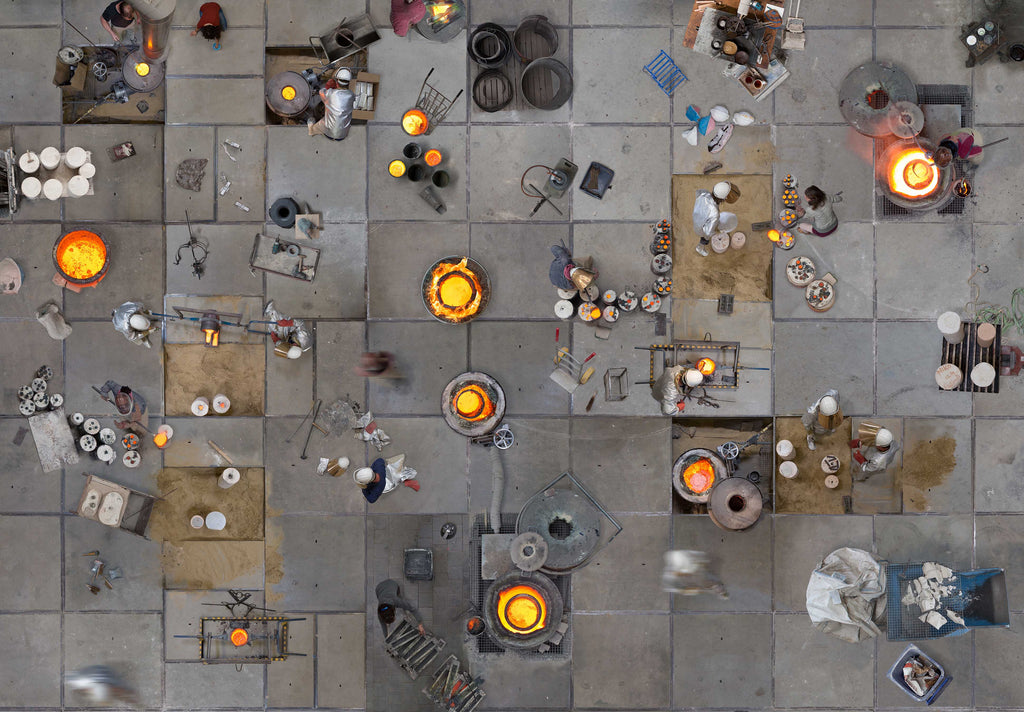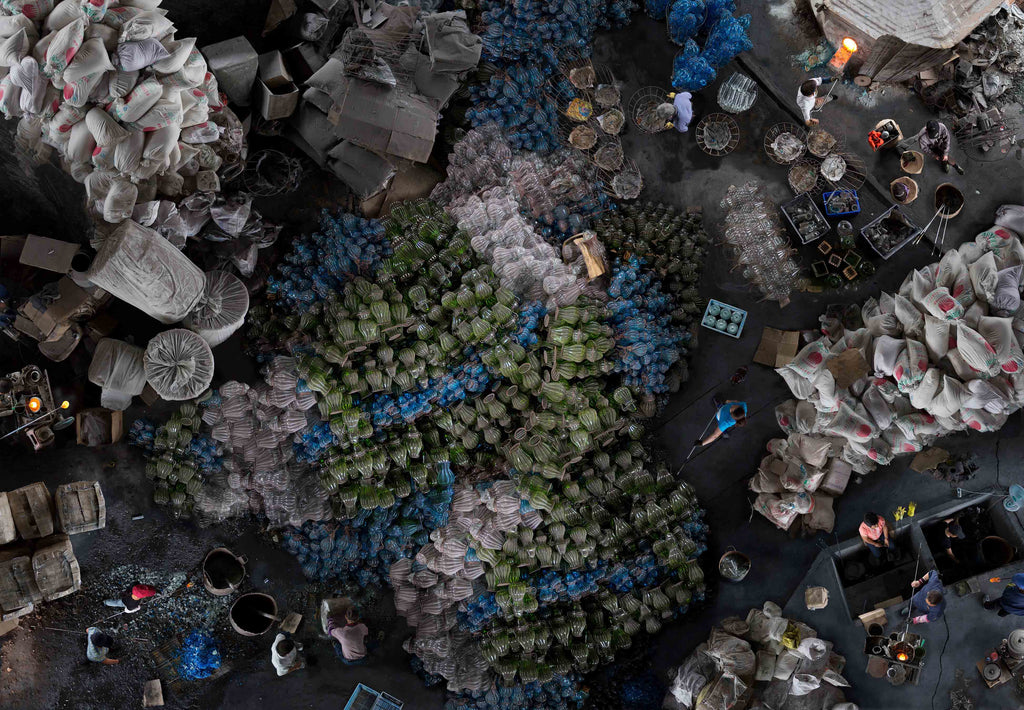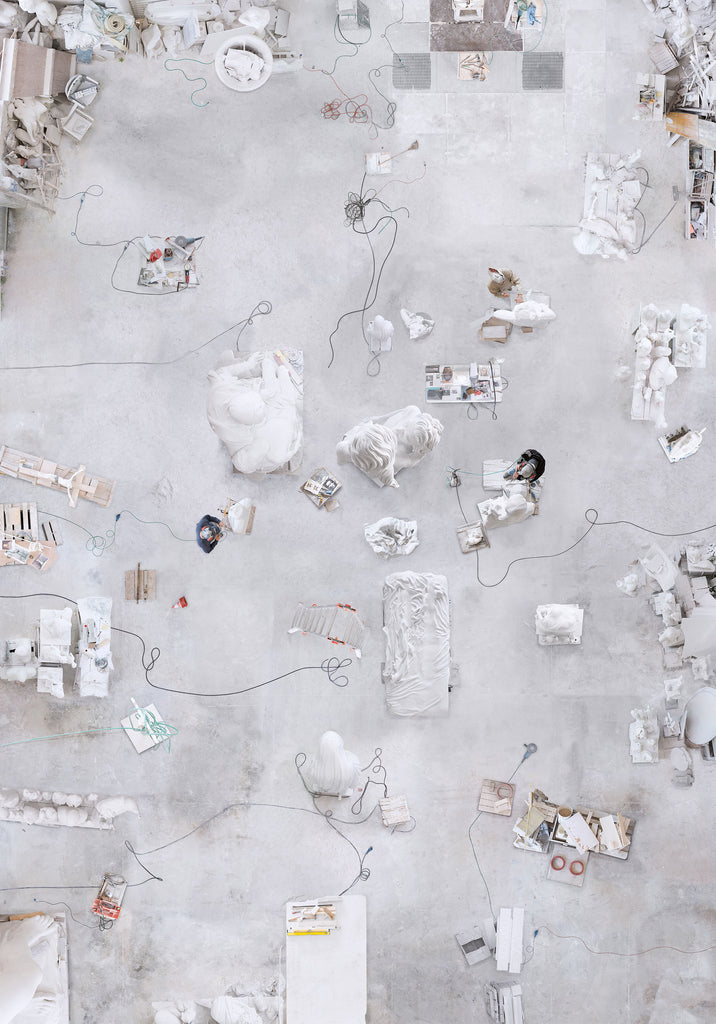Q & A with Katrin Korfmann
Read Peggy Roalf's Q&A session with photographer Katrin Korfmann, where she discusses the process behind her most recent series, Back Stages.
Peggy Roalf, for AI-AP's 'DART'
March 7, 2018
Peggy Roalf: What is there about the aerial perspective that works for you in creating these super-dense images of people at ordinary activities?
Katrin Korfmann: Using a bird’s-eye view, I can exclude the surroundings and all architecture so you have no reference to the location but can focus on the people and the event. In addition it creates a suggestion of distance and closeness at the same time. By simultaneously zooming in and out, I want to depict mysterious realities, which neither the eye, nor my camera could have grasped.
PR: The unusually grid-like backgrounds are one of the things that make these images so mesmerizing. How do you do your location scouting?
KK: I do a lot of research online, and often I am in contact with an assistant at the spot who is investigating the location and conditions. But it also happens that I just see a spot that is fascinating that I want to capture.
PR: Do you have the ability to perceive a place you’re seeing for the first time, at ground level, as it would be when seen from above? Do you carry a small camera drone around for quick previews?
KK: I have been shooting from this perspective for years, so yes, I am constantly scanning the ground of locations or look for high vantage points in order to see the place from another perspective. However I am not using a drone—that would make to much noise, and disturb the people from their activities, and then everyone would look up! I prefer to be a silent observer, so I use a high tripod, a crane, or a remote-controlled helicam.
PR: Are most of your photographs based on found activity—or do you sometimes orchestrate the action, with costuming and props, for example?
KK: Yes, sometimes, and it varies from asking pedestrians to walk through the image in a certain way to fully staging images with a dance company or a school class.
PR: Do you choose locations and activities to align with some specific ideas about human activity—or are you looking for something universal about human behavior?
KK: I usually work in series. Count for Nothing was focusing on street life in different cities. For Ensembles assembled, I photographed collective rituals in various places around the world: events sustained by individual euphoria in which colour—or colourful garments—dissolves individuality. For the new project Back Stages (in collaboration with Jens Pfeifer) we are presenting a visual manifest of the artistic and cultural creation process by emphasizing values placed on the production and handling of artistic goods.
PR: In post-production, do you edit from the gut or do you sometimes find a theme that requires a different approach?
KK: Good question. The editing is the creative part that is most intuitive. I start with a lot of sketches, and different approaches, until I feel that the image is ready. This is subjective of course and often a certain theme naturally finds it's own visual language.
PR: What place would you most like to photograph that so far has been out of reach, and why?
KK: Pictures of people in space! I imagine the perspective out there would be unexpectedly challenging—and what it might look like as a photograph?
Click here to read the full article
CLICK HERE TO VIEW KORFMANN'S COLLECTION ONLINE




